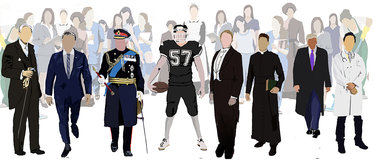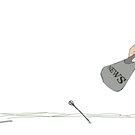Find and define the invisible women who shaped our culture and history
Guilderland has over 50 historical markers but not one of them celebrates a woman.
Guilderland, of course, is not alone. Our history has largely been written by white men and so reflects their values.
The New York Times, which has become our paper of record, in 2018 started the “Overlooked” series of obituaries to begin to address our society’s gender and racial imbalance.
The project launched on International Women’s Day that year with 15 obituaries of formerly forgotten women and has since been featured weekly.
The series is the brainchild of obituary editor Amisha Padnani. She wrote that, as she joined the obituaries desk in 2017, “a national debate on race was at a rolling boil and a renewed discussion on gender equality was beginning to take hold. People were coming out of the shadows to share personal tales of injustice and discrimination, of disparaging and belittling encounters that made them question their sense of belonging in the world. Their hope was that by sharing their stories they could start dialogues and inspire change.”
Padnani found a way to contribute after she stumbled on a website crediting Mary Ewing Outerbridge, who died in 1886, with introducing tennis to America. Outerbridge had not received a New York Times obituary — but she has one now. And so has Sylvia Plath and Ida B. Wells and Diane Arbus and Nella Larsen and many others who have contributed to who we are as a nation.
We are now at a point in our nation’s history where the federal government is purposefully erasing the struggles and triumphs of minorities and of women.
So we admire John Haluska’s efforts in Guilderland to honor women’s contributions to the town.
Haluska, who started painting Guilderland’s 42 historical markers as a retirement project, has taken on a leadership role securing 12 new ones in the last three years. The only marker that mentions a woman is the one in front of the Knower House on the outskirts of Altamont, which was put up by the State Education Department in 1932.
The marker notes, first, that Benjamin Knower established a hat factory in the house in 1800 and then says, “Gov. William H. Marcy married Cornelia Knower in this house.”
So Cornelia Knower is mentioned because of whom she married not because of who she was.
Haluska has worked with the William G. Pomeroy Foundation, which has funded nearly all of the new markers in Guilderland with more than $20,000 in grants.
Haluska has selected a pair of sisters, Maria and Elizabeth Terpenning, to honor. They married a pair of brothers, Henry and Levi Van Auken, who set up households and farmed in Guilderland along the Bozen Kill.
Funding has been secured for a marker to honor the brothers who fought in the Revolutionary War. The Pomeroy Foundation requires original source documents to fund a marker, which the brothers would have as enlisted men.
But not their wives. And there’s the rub.
Haluska wrote to us in a letter last week, soliciting funds from Enterprise readers for a marker, stating, “not much is known about individual women in Revolutionary War times.”
He went on, “To rectify this, we wish to honor women of the past in our town beginning with the Terpenning sisters.” He suggested wording that would describe them as “Pioneer Women” who lived from 1775 to 1840, married the Van Auken brothers, and “raised families, kept house and farmed for more than 50 years.”
We turned to Shelby Mattice for some advice. She is the curator of the Bronck Museum of the Greene County Historical Society, having worked at the museum for half a century. She is giving the last lecture of her long career this evening at the Voorheesville Public Library, invited by the New Scotland Historical Society to talk about the lives of women in America long ago.
Life for women in Colonial America was largely defined by a patriarchal society where they had severely limited rights and opportunities. She empathised with the dilemma in Guilderland because she knows how hard it is to document the lives of women after English common law took hold in the United States.
“Women were impeded by the legal system, their relationships with men, endless pregnancies, and illiteracy fostered by their fathers and then their husbands,” said Mattice.
The Bronck Museum includes a house built in 1663 by Pieter Bronck and his wife, Hilletje Jans; the couple came to Beverwyck after marrying in Holland.
“Dutch women on both sides of the Atlantic in the 1600s were allowed to engage in business,” said Mattice. “They could sign contracts, they could represent their husbands’ businesses, and they ran businesses on their own. And that was very different from the English common law that did not consider women to have any rights at all.”
Dutch women, like Jan, usually didn’t take their husband’s last name. Mattice, using translations of Dutch legal documents made by Charles Gehring, has been able to piece together much about Jan’s life because she was in court a number of times, protecting her financial interests.
This was not true for women in the Revolutionary War period, however, because English common law “made it very difficult for women to protect themselves in any legal way,” said Mattice. They were considered a legal non-entity. They did not exist.” While it was impossible for a woman to divorce her husband, a man with social standing, she said, could divorce his wife.
After the Revolution, she said, “There was a little bit of enlightenment, for maybe a decade there. Women after the Revolution believed that they had earned the right to be equal citizens and pursue whatever they were interested in. But then came the horrible Victorian era,” she said.
Not until after the Civil War, Mattice said, “with the loss of so many men, women got their toe in the door sort of … Widows needed to support themselves and their children, and there were positions, mostly in offices, where the men simply weren’t there.”
In the Revolutionary War period and after, Mattice said, there was “correspondence from men looking for marriageable women, wanting to know if she was literate or not … because men felt that a woman with a certain amount of knowledge in her head would make a poor wife. That was a negative.”
Basic literacy and becoming “aware of the world outside her home,” said Mattice, “really depended on her father and her husband.”
Mattice said, “Everyone knows the famous quote from Abigail Adams as she was writing to her husband in Philadelphia, where he was working on the Declaration of Independence.”
Abigail Adams was well educated because, as she was growing up, her father, a minister in Weymouth near Boston, encouraged her to use his library.
In March 31, 1776, as she was tending to their children and the Adams home in Massachusetts, she wrote to her husband, “And by the way in the new code of laws which I suppose it will be necessary for you to make, I desire you would remember the ladies, and be more generous and favorable to them than your ancestors.”
If the fight for liberty was affecting everyone, then everyone should have equal say in who represented them, she reasoned.
“Do not put such unlimited power into the hands of the husbands,” she wrote. “Remember all men would be tyrants if they could. If particular care and attention is not paid to the ladies, we are determined to foment a rebellion, and will not hold ourselves bound by any laws in which we have no voice, or representation.”
Mattice went on, “But what no one ever seems to quote, and I quote probably too many times, is what did he write in reply?”
John Adams wrote back on April 14, 1776 of the American patriots inspiring others abroad. “But your letter was the first intimation that another tribe more numerous and powerful than all the rest were grown discontented.—This is rather too coarse a compliment but you are so saucy, I won’t blot it out. Depend upon it, we know better than to repeal our masculine systems. Although they are in full force, you know they are little more than theory.”
Mattice went on, “It would be a long time before women got any equality under the law.”
She worries now, since the Equal Rights Amendment, first proposed in 1923 and passed by Congress in 1972, was never enshrined in the Constitution that women’s rights could backslide.
Mattice advocated for the ERA in the 1970s but it failed to meet even the extended ratification deadline; the needed 38th state, Virginia, didn’t ratify the amendment until 2020.
“It would be nice to have that as backup,” Mattice said, “if some crazy person decided to put us back in the house.”
Honoring women from our past can help us move forward rather than regress. The New Scotland Historical Society this year placed the first marker in town to honor a woman.
The marker at John Boyd Thacher State Park honors Winnifred Goldring. She was the first female state paleontologist in the nation and in the world. With more than 50 publications, she was also the first woman to serve as president of the Paleontological Society.
Our geology columnist, Michael Nardacci, then wrote about how Goldring made the mind-boggling past accessible to the curious, opening paleontology, particularly that of the Helderbergs, to the masses.
So we would encourage people who care about history, and women’s important role in it, to look for women to honor like Goldring who have made contributions we can learn from.
If there are no court records or enlistment records, are there diaries or poems? Are there sketches or paintings? Are there samplers embroidered with words of wisdom? Are there recipes from the 1700s that have been passed down through generations of a family? Is there pottery or beadwork? Are there original quilts or woven rugs, or hand-sewn clothes made by women we can highlight and commemorate?
We urge our readers to search through their family trees, back to the Revolution, and to search as well in their attics and cellars for such remnants of our past.
If we still come up with nothing, maybe rather than raising funds to honor just the Terpenning sisters — whose names we know only because of their husbands — it would be better to have a marker honoring all of the invisible women who kept the home fires burning during the Revolution, who raised the children and tended the fields while their husbands were away.
Liberty, after all, is a shared victory that each of us — male and female — need to revere and defend now and into our future.


